Do you have a question about the Arctic Cat DVX 250 and is the answer not in the manual?
General warning about ATV hazards and operating precautions.
Further precautions and safety advice for operating an ATV safely.
Key safety instructions to prevent serious injury or death.
Identifies ATV components and controls for operation.
Identifies DVX model parts and controls for operation.
Potential hazard of improper safety gear and how to avoid it.
Hazards of operating under influence and at excessive speeds.
Hazards of attempting stunts like wheelies or jumps.
Hazards of failing to inspect/maintain and improper control usage.
Hazards of operating on unfamiliar terrain without extra care.
Hazards of operating on rough, slippery, or loose terrain.
Hazards of improper turning and hill operation.
Hazards of climbing hills improperly.
Hazards of going down hills improperly.
Hazards of improperly crossing or turning on hills.
Hazards of stalling on hills and improper reverse operation.
Hazards of operating over obstacles and skidding/sliding.
Hazards of operating in water and improper reverse operation.
Hazards of improper tires, pressure, and modifications.
Essential protective clothing and gear for safe ATV operation.
Pre-ride checks for critical ATV components like tires, brakes, and controls.
Understanding body weight, balance, and forces for ATV handling.
Techniques for body positioning and executing wide turns.
Advanced techniques for making sharp turns while maintaining control.
Fundamental skills like mounting, starting, shifting, and parking.
Procedure for starting the ATV engine, including choke usage.
Steps for starting a cold engine and temperature adjustments.
Techniques for smooth and quick stopping, avoiding brake overuse.
General techniques for controlling the ATV through body movement.
Techniques for safely climbing hills, including gear selection and body position.
Techniques for descending hills and riding on slopes.
Dangers of alcohol and drug use while operating an ATV.
Procedure to burnish brake pads for effectiveness.
General warning about ATV hazards and operating precautions.
Further precautions and safety advice for operating an ATV safely.
Key safety instructions to prevent serious injury or death.
Identifies ATV components and controls for operation.
Identifies DVX model parts and controls for operation.
Potential hazard of improper safety gear and how to avoid it.
Hazards of operating under influence and at excessive speeds.
Hazards of attempting stunts like wheelies or jumps.
Hazards of failing to inspect/maintain and improper control usage.
Hazards of operating on unfamiliar terrain without extra care.
Hazards of operating on rough, slippery, or loose terrain.
Hazards of improper turning and hill operation.
Hazards of climbing hills improperly.
Hazards of going down hills improperly.
Hazards of improperly crossing or turning on hills.
Hazards of stalling on hills and improper reverse operation.
Hazards of operating over obstacles and skidding/sliding.
Hazards of operating in water and improper reverse operation.
Hazards of improper tires, pressure, and modifications.
Essential protective clothing and gear for safe ATV operation.
Pre-ride checks for critical ATV components like tires, brakes, and controls.
Understanding body weight, balance, and forces for ATV handling.
Techniques for body positioning and executing wide turns.
Advanced techniques for making sharp turns while maintaining control.
Fundamental skills like mounting, starting, shifting, and parking.
Procedure for starting the ATV engine, including choke usage.
Steps for starting a cold engine and temperature adjustments.
Techniques for smooth and quick stopping, avoiding brake overuse.
General techniques for controlling the ATV through body movement.
Techniques for safely climbing hills, including gear selection and body position.
Techniques for descending hills and riding on slopes.
Dangers of alcohol and drug use while operating an ATV.
Procedure to burnish brake pads for effectiveness.
| Brand | Arctic Cat |
|---|---|
| Model | DVX 250 |
| Category | Offroad Vehicle |
| Language | English |
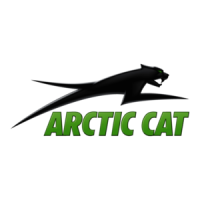

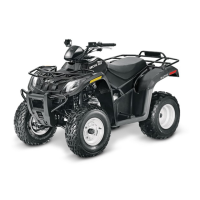

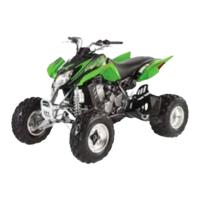
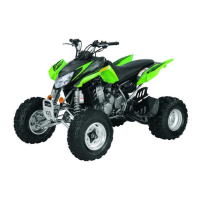
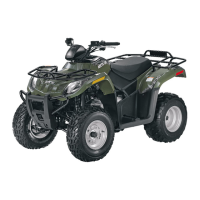
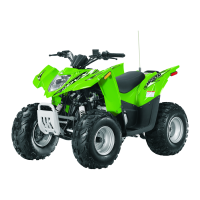
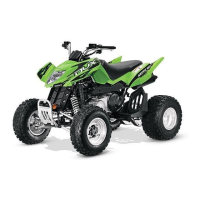
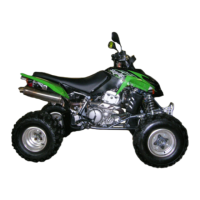
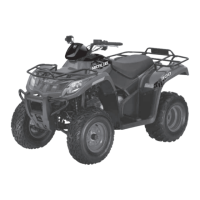
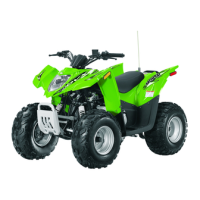
